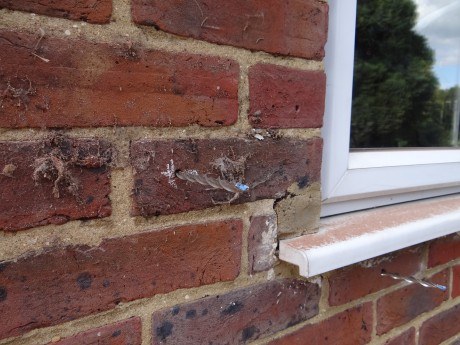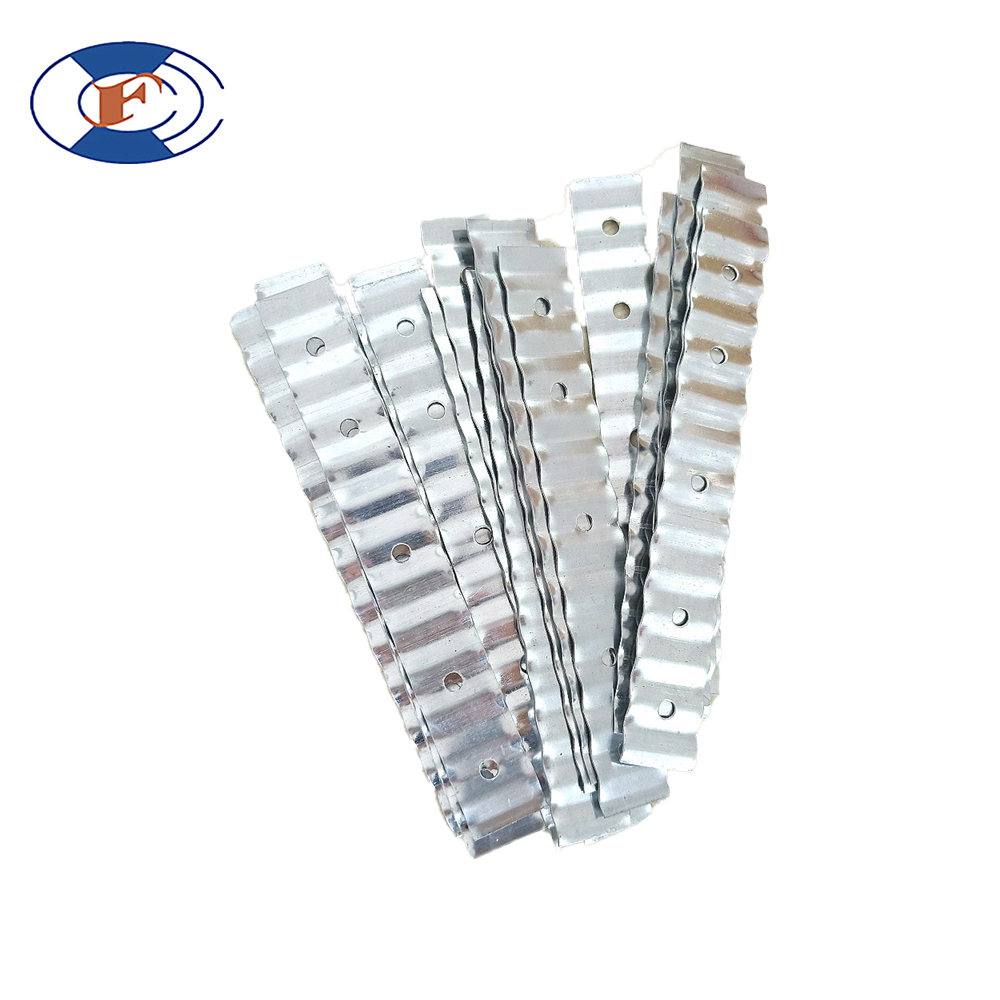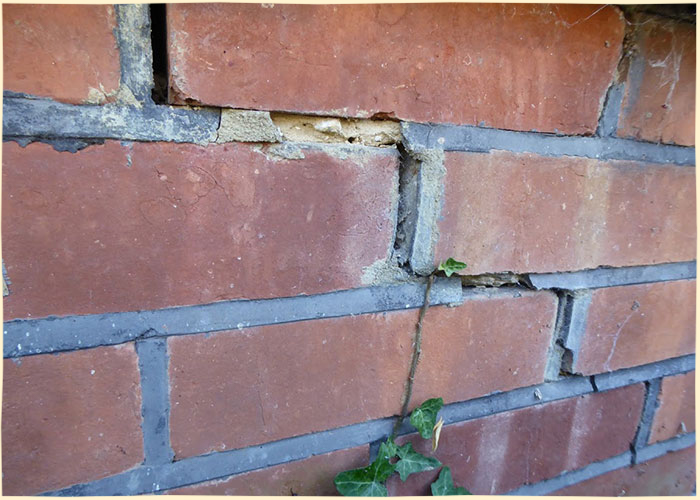
A wall tie failure refers to a structural issue that occurs when the ties used to secure the external brickwork or masonry of a building to its internal structural frame become damaged, corroded, or fail to perform their intended function. Wall ties are typically metal connectors that provide stability and support, ensuring the structural integrity of the building.
Several factors can contribute to wall tie failures, including poor installation, inappropriate material selection, inadequate design, or prolonged exposure to harsh environmental conditions. When wall ties fail, it can lead to the separation or movement of the external brickwork or masonry from the internal frame, posing a serious risk to the building’s stability.
Signs of wall tie failure may include visible cracks in the masonry or brickwork, bulging walls, leaning or tilting of the external facade, and excessive movement or vibrations. It is crucial to address wall tie failures promptly to prevent further deterioration and potential collapse of the structure.
After reading this article, you will understand why they malfunction and how to avoid causing even bigger losses!
What is a Wall Tie?

Since the early 19th century, construction has taken a modern turn, The rise of industrialization in London and the Easter states of the USA not only bought new and exciting techniques, but it was the first time the concept of wall ties was introduced.
There are many ways to describe a wall tie these days; however, to put it simply or in lay man’s terms, A Wall Tie is a metal/Steel rod which helps fill a cavity between bricks. It is considered to add much more stability and texture to the wall.The picture above is a kind of wall tie, called brick tie.
Since the discovery, the construction industry has been revolutionized, and these ties played a huge role in reforming it. However, it is still unclear which country first started applying them in their building, but it is believed to be the Britishers did so.
As per today’s standard, 51 wall ties are required per 1000 standardized bricks. The 51 ties make these brick bonds much stronger and hold them in better shape. These bought much stability to taller buildings consisting of more than two floors or more. It is generally agreed upon that Skyscrapers aren’t possible to be built without installing thousands of wall ties to support the structure.
Why Do They Fail? How Do I Check Them?

As we know now, every invention is perfect, with some good advantages also come flaws. Wall ties, when started to be used, were believed to last as long as the building does, However, due to the use of poor quality materials and bad galvanization techniques, they were exposed to moisture and corrosion.Over time, corrosion can weaken the ties, causing them to deteriorate, break, or lose their effectiveness in securing the walls together.
Improper installation and the effects of thermal expansion and contraction or earthquakes or bad weather can also cause damage to wall tie.
There are a few ways which you can use to check the wall ties at your home or school etc.
1: Observe the colour of the plastic quoted on the wall ties; if it’s yellow, it means they are getting weaker and should be changed soon; however, if the color is brown, then it requires your immediate attention.
2: Use a normal wire cutter to see if the Wall Tie is movable from its regular position; if there is a movement, it means they are either not installed correctly or no longer can support the weight of the structure.
3: Tension Test is the most professional test you can do for your wall ties; you would need a tension measuring device for your wall tie and apply pressure on it. If it flexes more then usual it means the wall tie is no longer usable.
There are many other methods you can use, however don’t try with unless you have some experience; there are many free consulting companies who can give you proper advice on how to install or check them for free online.
What Should We Do When Wall Tie Failure Occurs?
When wall tie failure occurs, it is important to take prompt action to address the issue and ensure the structural integrity of the walls. Here are some steps to consider when facing wall tie failure:
Inspection: Conduct a thorough inspection of the affected area to identify the extent of the wall tie failure and assess any resulting damage or structural concerns. Look for signs of wall movement, cracking, or separation between the wall components.
Engage Professionals: Consult with a structural engineer, architect, or construction professional who specializes in wall tie systems or structural repairs. They can provide expert advice and guidance on the appropriate measures to take.
Stabilization: If there are immediate safety concerns, take steps to stabilize the affected wall. This may involve installing temporary bracing or support systems to prevent further movement or collapse until permanent repairs can be carried out.
Determine the Cause: Investigate the underlying cause of the wall tie failure. This may involve evaluating factors such as corrosion, improper installation, material quality, structural movement, or environmental conditions. Understanding the cause will help guide the appropriate repair strategy.
Repair or Replacement: Depending on the severity of the wall tie failure and the extent of damage, repair or replacement of the affected ties may be necessary. This can involve removing the damaged ties, installing new ties, and ensuring proper installation and secure connections. The type of repair or replacement method will depend on the specific wall construction and the recommendations of the structural engineer or professional consultant.
Corrosion Mitigation: If corrosion is identified as a contributing factor to the wall tie failure, it is important to address the corrosion issue to prevent future failures. This may involve applying corrosion inhibitors, using corrosion-resistant materials for replacement ties, or implementing protective coatings or systems.
Regular Maintenance: Implement a regular maintenance plan to monitor the condition of wall ties and address any signs of deterioration or damage. This may involve periodic inspections, cleaning, and maintenance of wall tie systems to ensure their ongoing effectiveness and prevent future failures.
It is crucial to involve qualified professionals throughout the process to ensure that the repairs are carried out properly and in compliance with relevant building codes and regulations. Wall tie failure can have serious implications for the structural integrity of the building, so taking timely and appropriate action is essential to maintain the safety and stability of the walls.
Conclusion about Wall Tie Failure
When facing wall tie failure, conduct a thorough inspection to assess the extent of the failure and any resulting damage, and engage professionals for expert advice and guidance.
Stabilize the affected wall with temporary bracing or support systems if immediate safety concerns exist.
Determine the cause of the failure, addressing factors like corrosion, improper installation, material quality, structural movement, or environmental conditions.
Repair or replace the damaged wall ties based on professional recommendations, considering the severity of the failure, and implement corrosion mitigation measures if necessary.
To prevent wall tie failure, use high-quality corrosion-resistant ties, ensure proper installation, conduct regular inspections, address issues promptly, implement corrosion prevention measures, and involve qualified professionals during design and construction.
RFQ about Wall Tie Failure
How much does it cost to get a professional opinion on your wall ties?
Answer: There are many companies that provide free tests. You can look them up one closest to you; if you are unable to do so we have a virtual professional who can guide you to do it and will accompany you through the process.
Is it expensive to change my Wall Ties?
Answer: Based on the size of the building and how many wall ties are required, your cost can be calculated this process is not very expensive as wall ties are extremely cheap and readily available on the market( just make sure you buy the right one).
I’ve noticed some cracks in my walls. Could it be a wall tie failure?
Answer: Wall tie failure can be one possible cause of cracks in walls. It’s essential to have a professional assess the situation to determine the exact cause.
How can I identify if my wall ties are failing?
Answer: Signs of wall tie failure include cracks in walls, bulging or bowing walls, loose or missing mortar joints, or visible movement of brickwork. Consult with a structural engineer or a qualified professional for an accurate assessment.
What are the common reasons for wall tie failure?
Answer: Common causes of wall tie failure include corrosion due to exposure to moisture, inadequate installation, poor-quality materials, seismic activity, or the natural aging of the ties. It’s crucial to address these issues promptly to prevent further damage.
Can wall tie failure be repaired, or do I need to replace the entire wall?
Answer: In some cases, wall tie failure can be repaired by installing new ties or reinforcing the existing ones. However, the extent of the damage and the structural integrity of the wall will determine whether repair or replacement is necessary. Consult a professional to assess the situation accurately.
Are wall ties covered by homeowners’ insurance?
Answer: The coverage for wall tie failure may vary depending on your specific insurance policy and the cause of the failure. It’s recommended to review your policy and consult with your insurance provider to determine if wall tie failure is covered.
Can wall tie failure lead to structural instability?
Answer: Yes, wall tie failure can compromise the structural integrity of a building. If left unaddressed, it can result in further damage, including the collapse of walls or potential risks to occupants. Seeking professional help is crucial to assess and rectify the issue.
What is the average cost of repairing wall tie failure?
Answer: The cost of repairing wall tie failure can vary depending on the extent of the damage, the size of the affected area, and the required repairs. It’s best to obtain multiple quotes from qualified contractors to get an accurate estimate for your specific situation.
How can I prevent wall tie failure?
Answer: To prevent wall tie failure, it’s important to ensure proper installation of ties during construction or renovation. Regular inspections, maintenance, and timely repairs can also help identify and address potential issues before they escalate. Consulting with professionals and following industry guidelines is recommended for effective prevention.




